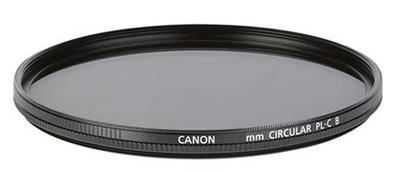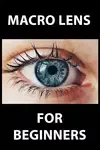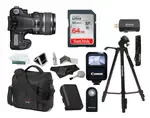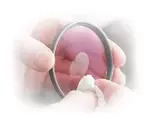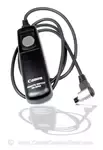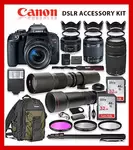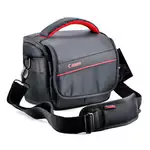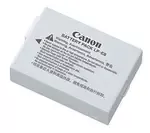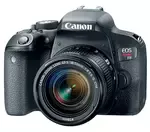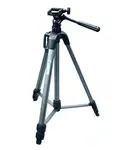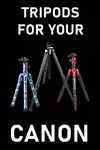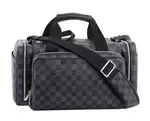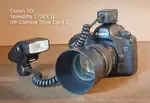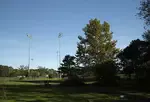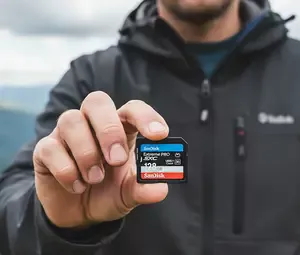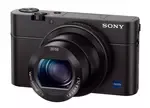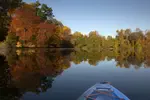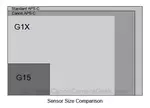This page may contain affiliate links that pay me a small commission. There is no cost to you. You can review the affiliate statement at the very bottom of this page if you want more information. As an Amazon affiliate Canon Camera Geek may earn a small commission from qualifying purchases, at NO added cost to you.
What To Upgrade (and Downsize) From Canon 80D?
by Steve
(CT, USA)
I have an 80D with 4 varied lenses. I am happy with it, but I really want something smaller. Some things I am considering:
1 - Purchasing the SL3 as a second camera, so I can use all my lenses
2 - Getting a mirrorless for about the same $, with an adapter
3 - Trading in the 80D for a full frame mirrorless, like the EOS RP
I want the ability to shoot HD video as well.
Thank you!
Wow! What a great question, Steve.
You do have several options when considering upgrading and downsizing your Canon 80D to either mirrorless or a super small DSLR.
Downsizing from 80D to SL 3
I'll start by recommending that you eliminate the Canon SL3 from your options. You'll only save about 10 oz. in weight by downsizing from a 80D to a Canon SL3, so that's not a big deal. Even though you're talking about it as a backup, I don't think you'd be happy with its performance if you're used to your Canon 80D. I'm assuming you're a guy with an average sized hand-I don't think you'd like the grip on the SL3 either.Upgrading to Mirrorless From Canon 80D
Unfortunately, the size advantage when switching to mirrorless is reduced somewhat when you add an adapter and a full frame lens. Some photographers would rather go for a smaller APS-C camera and the smallish EF-S lenses that will keep the size and weight down. It does depend somewhat on the mix of EF Vs EF-S Lenses you have. (I went from a 70D to a 90D because of the higher megapixel count, the updated Digic processor, and the dramatically improved video capabilities. I'm not sure that upgrading from your 80D to a 90D is enough of an upgrade to justify the investment.)Replacing Canon 80D With EOS RP
I like the EOS RP a lot and seriously considered it myself when I was upgrading from my 70D. It's about the same weight reduction as the SL3, BUT it's also an upgrade to a full frame sensor. Canon has been behind in their mirrorless offerings (especially compared to Sony) but the EOS RP release in early 2019 changed the game a bit. It's definitely a great opportunity to enter into full frame and mirrorless at an attractive price point, although the RP is a mid-level performance camera.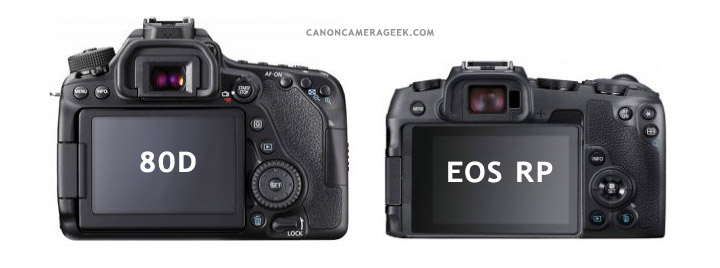
A big part of going from an APS-C camera like the 80D to a full frame DSLR or mirrorless is the lenses you have and the lenses you're willing to purchase. I don't know what you like to shoot or the specific Canon lenses you have, so it's hard for me to get real detailed with my answer on an 80D replacement, but I hope this helped give you some ideas, Steve.
Please let me (and other readers) know what direction you take. Just curious if you'd consider a high end compact like the Canon PowerShot G1 X Mark III as your backup to your 80D. It does have some limitations for sure, but it's got an APS-C sensor, a viewfinder, shoots raw, and its size is amazingly small-it fits in your pocket-compared to your 80D.
Thanks so much,
Bruce
Comments for What To Upgrade (and Downsize) From Canon 80D?
|
||
|
||
|
||
|
||
|
||
Charging The Canon 80d Battery Grip
by Rick Hinkle
(New Mexico, USA)
Morning from New Mexico...
Can the Canon battery grip I just purchased be charge in the camera like my r5 or do the batteries need to be removed?
Thank you... rick
Hi Rick,
Thanks for asking about charging batteries for your Canon 90D. I don't know if you purchased the original Canon BG-E14 battery grip for your 80D or one of the many 3rd party grips, but I believe the answer is the same.
CHARGING 80D BATTERIES
In order to charge a battery for your 80D directly, or batteries that are inserted into a compatible grip for your EOS 80D, you must remove the battery(s) and use one of the chargers.Fortunately, the 80D battery charger is very compact and very affordable to buy if you don't already have one. Additionally, the 80D, 80D chargers, and 80D battery grips take the full-size, LP-E6, the LP-E6N, and the LP-E6NH versions of batteries. There are plenty of 3rd party batteries and chargers that cost a fraction of the Canon branded battery and charger.
I find it very easy to have a 2nd battery on hand and just charge when I'm done a photo shoot. I actually have 4 LP-E6 type of batteries that fit the 3 Canon bodies I shoot with right now, my Canon R7, my 90D, and my 5D Mark III. Canon finally got smart and made its more recent camera batteries have the same compatibility.
Good luck with your 80D,
Bruce
RELATED ARTICLES
Canon Battery Compatibility
Canon Battery Grips
Canon 80D Replacement
Tips For Taking Basketball Sports Shots
With Canon 80D for Special Olympics
by Gene Metz
(Houston, Tx, USA)

Canon 80D Camera
Using a Canon 80D and wondering about the light setting and how can I tell if the lighting is tubular LED or tubular fluorescent. And what setting to use.
Hi Gene,
Thanks for you questions on photographing indoor sports with an 80D and how to handle the 80D camera and color settings.
Congrats on being able to attend such a great event as the Special Olympics and being able to photograph it with a quality camera like the Canon 80D.
Canon 80D color balance setting
Gene, fortunately you have several option on getting the right color balance when shooting under either LED or Fluorescent lighting. You also may be a little challenged with getting the right exposure with a fast enough shutter speed to "freeze" the action. Here is what I would do if it was my photo shoot.1. set your 80D to RAW mode
This does mean you'll be spending time adjusting the white balance post-capture with software, but it ELIMINATES any possibility of getting any finished images with a strange color cast. Shooting in RAW mode on your 80D gives you complete control over "processing" your images in a variety of ways without destroying the original image files. (You can always shoot both jpg and RAW images as backup at the same time with your 80D).2. set a custom white balance
If you can get close to the basketball court before the game starts you can photograph a neutral gray target under the same lights as the game-only a few dollars to buy-and set your white balance on that. That is the best way to match your 80D color settings to the light source that's there on the basketball court.3. get light source ahead of time
Talk to someone in the maintenance department at the venue or a TV cameraman or photographer who has shot there before to find out the type of lighting being used. If you have that information you can adjust your color balance to that icon setting in your 80D menu or set it to the right "K" color temperature on your 80D.tips for 80D sports photography settings
You'll likely need a high ISO setting (use 1600 as a starting point) to give you a fast shutter speed with your lens at its widest aperture (low f/stop number). Having a "fast" lens, with a maximum aperture of f/2.8 or f/4 would be very advantageous for you to use.I don't know what venue you're visiting, how bright the lighting will be, or how far you'll be from the court, so it's tough for me to what to recommend exact camera settings.
There are some links at the end of this post that should help you further. Feel free to email me if you have any further questions. Bruce(at)canoncamerageek(dot)com
Have a blast shooting your 80D,
Bruce
related to 80D color balance sports photography
LED Tube vs. Fluorescent Tube Lighting
Color Temperature and Color Balance
Sports and Shutter Speed
Landscape Lens For Canon 80D
by Howard Russell
(Essex United kingdom )
"I currently own a EOS 80d which i have decided to keep having read your report on them. My question is this, I have the following lenses all canon and enjoy landscape photography mainly is there any other lens that I should buy or am I covered,
Canon EF-S 18-55mm f/3.5-
5.6 IS
Canon EF-S 10-18mm f/4.5-
5.6 IS STM
Canon EF-S 55-250mm f/4-
5.6 IS lI
Canon EF-S 35mm f/2.8
Macro IS STM
Thanks in advance
Howard Russell"
Hi Howard,
Thanks for asking about lenses for your Canon 80D!
You've got a great focal length range for shooting landscape photos with your EOS 80D between the 10-18mm lens, 18-55mm, and the 55-250mm. You can shoot the typical super wide views, as well as close-up detail photos, and everything in between.
Here's a post you and other readers might find helpful on Canon Landscape Lenses
Canon EOS 80D vs 77D
by Birgit
(London, UK)
Hi! I’m currently looking to buy a camera for fashion and gig photography and I’m choosing between Canon EOS 77D & 80D. Which one would you recommend? And also, would you suggest buying the Sigma 17-50mm f/2.8 EX DC OS HSM lens for gigs? Thanks so much!

Hi Birgit,
Thanks for your question about the Canon 80D versus the Canon 77D. Both the 77D and 80D will work well for shooting regular gigs as well as photographing fashion. These two cameras have many features that are the same with only a few that might make a difference for you and will help you choose the best fit. We'll get to those in a minute, but first I wanted to answer the question if the Sigma makes for a good 77D or 80D lens.
Lens For the 77D or 80D
The Sigma 17-50mm f/2.8 lens will work perfectly with both the 80D as well as the 77D. The "DC" in this Sigma's description means its intended to be used with Canon's APS-C "crop" sensor cameras like the 77D and 80D.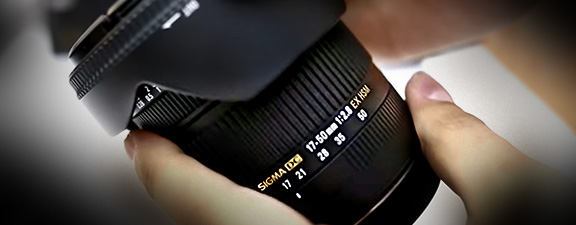
The 77D and 80D have the same crop factor of 1.6X. With the Sigma lens you'll get the same angle of view as a 27-80mm on a full frame camera. You will like the "fast" constant maximum aperture of f/2.8 as good for shooting in low light situations.
80D Versus 77D comparison
One big difference between the 77D and the 80D is price point. Both have come down in price since they first came to market. The 80D on 2016 - 77D in 2017. You'll save several hundred dollars on the 77D over the 80D. Canon intended the 77D to be a new category of camera, positioning itself between the Rebel t7i and the EOS 80D. The 80D is positioned between the 70D and 90D-my favorite.The 80D is bigger and about 35% heavier. Neither the 77D or the 80D come close to the weight and size >b>Pro Canon DSLR cameras, like the 1D series. Both are easy to grip with one hand, although if you're trying to keep your gear as small and light as possible, the 77D has the advantage here.
If you are shooting events that may require taking lots of photo for long periods of time without interruption, the 80D has a clear advantage over the 77D with better battery capacity.
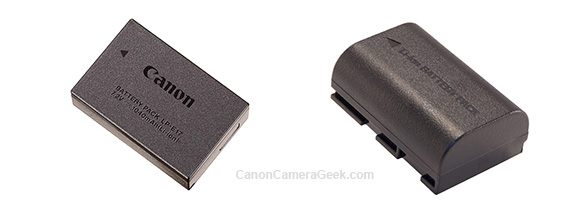
You can get battery grips for extended shooting (Non-Canon made for the 77D), but that adds to the size and weight of your set-up.
Canon 77D Advantages
1. PRICE The 77D costs several hundred dollars less. That leaves more money for the right lens.
2. STABLE VIDEO You'll get smoother video with the image stabilization feature of the 77D.
3. SHARING The Canon 77D has Bluetooth technology. For me, that's irrelevant, but that could be a big difference for you.
4. PROCESSOR The 77D has a Digic 7 processor. Thai's an advancement over the Digic 6 processor.
Canon 80D Advantages
1. WEATHER The 80D has better weather sealing to protect your camera when you're shooting under poor weather conditions.
2. VIEWFINDER The viewfinder is brighter and gives a more accurate "same view" as the image that hits your sensor.
3. FRAME RATE The 80D has a slight edge over the 77D, shooting at 7 frames per second, rather than 6 frames per second.
4. INDURANCE The 80D is built with a larger battery so you can shoot longer without the interruption of having to change batteries.
Although neither the 77D or 80D cameras are categorized as pro cameras both will give you excellent image quality and can be used for professional jobs. I use my Canon 90D professionally all the time. Both cameras can double as webcams and both have nice bright articulating LCD touch screens.
I hope this post helped you with your comparison of the 80D and the 77D, Birgit. Feel free to comment on how you make out choosing either camera.
Thanks,
Bruce
Live View EOS 80D
"Hi thanks for the Help. Perhaps you can help? I have everything enabled for Live View on my 80D and when I am in manual mode and shutter priority mode in Live View I can adjust settings (aperture & shutter speed ) and see the Histogram move as the screen gets lighter or darker (exposure simulation )....but that does not happen when I am in Aperture Mode under Live View... is it not supposed to as the other 2 modes mentioned do? Any Help? thanks"
Thanks for your question about manual and aperture priority settings with your Canon EOS 80D.
I'm not 100% sure I understand your question, but I'll try to answer. I wish I was there in person to see exactly what is happening as you are setting your 80D settings. When you're in manual mode each change you dial in when you change the aperture will change the exposure (and the histogram) because you're changing the size of the lens opening and the camera is not changing the shutter speed.
In Aperture priority, each time you change the aperture your 80D is AUTOMATICALLY changing the shutter speed to keep the exposure constant. In this case the histogram should not change.
Feel free to reply if this doesn't hep with your question about your 80D exposure settings and its histogram.
Bruce
Comments for Live View EOS 80D
|
||
|
||
Upgrading a Canon 80D
To a Canon EOS 5D Mark IV Full Frame Digital SLR
by Sandy
(Vero Beach Florida)
Hi Bruce,
I am wanting to purchase :
Canon EOS 5DS DSLR Camera Body {50MP}. Why are some 50mp, and 20mp ... what does this mean? Is it still a full frame and the pixels are increased or the processing faster? I currently have a Canon 80D,but now I'm looking to upgrade.
Thanks so much,
Sandy Shinn
Hi Sandy!
Thanks for asking about the EOS 5Ds or possibly the 5D Mark IV (mentioned in your title) as a replacement for your 80D. I'll do my best to steer you in the right direction. Canon gives you lots of options, so it can get confusing, especially when comparing sensor size, megapixel count, newer and older DSLRs, and now mirrorless too!
Released in 2015, the 5Ds is considered by some to be somewhat an outdated model. Others don't mind. Heck I still use my 5D Mark III (2012) for shooting portraits professionally, but really like the newer FULL FRAME EOS R. It really depends on exactly what you want to photograph and how serious you are about your equipment. There are photographers out there who are perfectly happy with using a smartphone as their camera.
Replacement Factors
1. Your budget. how much you are willing to invest in a replacement.
2. Your existing lenses. Are you happy with what you have? Full frame (EF) or APS-C crop (EF-S) lenses?
3. Mirrorless. Would you consider going to this newer technology that is now dominating the market?
4. New or used. New is more exciting. Used is more economical.
5. Reason. The main reason you want to upgrade from your 80D.
6. Subjects. The type of photography you shoot will be a big factor in choosing a replacement for your Canon 90D.
In the meantime, I recommend you fill out the form on my one-on-one camera advisor page. One on One Camera Advice
REPLACEMENT RELATED POSTS
Replacing/Upgrading a Canon 80D80D and 77D Comparison
Replacing to a 5D Mark IV
Thanks,
Bruce
Comments for Upgrading a Canon 80D
|
||
|
||
|
||
Circular Polarizer Filter For Canon 80D
by Catherine
(San Diego, CA)
Hi! I have a (Canon) EOS 80d and would like to get a circular polarizer filter for it. What size should I buy and how do I attach it to the camera? Thanks so much!
Hi Catherine,
Thanks for asking the Canon Geek about getting and attaching a polarizing filter to your Canon 80D. That's a fine camera. The good news is that you have a large selection of filters to choose from.
You don't want to choose the cheapest one just to save money. After all, the optics (the lens and a filter) that light has to travel through before it hits the 80D sensor plays a big part in the quality of your photographs.
Attaching The Filter To Your 80D
The CPL filter will simply screw on the end of the lens that is attached to your 80D. Don't overtighten it. Screwing the filter onto your lens too snugly can get it stuck and there are times when you don't always want to have your filter attached.Once attached properly, you'll have the ability to rotate the outer ring of the rotating filter to add or subtract the amount of polarizing effect you desire.
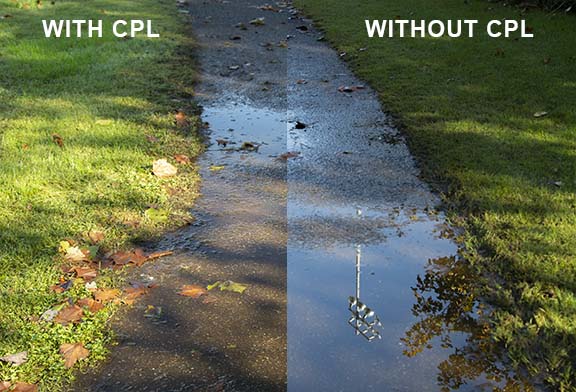
80D Filter Size
The size of the filter depends on the specific lens you have attached to your camera. You can read the size needed off the front end of the lens you are using.If you have the standard EF-S 18-55mm f/3.5-5.6 IS II kit lens the filter size for your 80D is 55mm.
If you have the Canon EF-S 18-135mm f/3.5-5.6 IS lens the filter size for your 80D is 67mm. The two articles linked below will help you even more.
Getting the Most Out of Your Canon Polarizing Filter
Filter Sizing Table For Canon Lenses
I hope you found this helpful, Catherine.
Good Luck!
Bruce

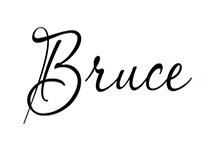
Bruce Lovelace is the publisher of Canon Camera Geek. Read more about him on the About Page. He also publishes how to articles and camera gear reviews at the Photography Tips website.
View some of Bruce's photos on Instagram and Flickr. Join the tribe of followers on YouTube. Bruce also runs photo workshops and provides 1 on 1 digital photography coaching.
Search for articles on this Site:
Recent Articles
-
Choose the Right Memory Card for Your Canon R6 Mark II: Speed And Size
Nov 05, 25 02:04 PM
R6 Mark II Memory Card -
Canon G1x Mark II vs G1X-Side By Side Comparison of Canon G1X Cameras
Oct 22, 25 08:35 AM
G1 X Mark II vs. G1 X: Is the New Version a HUGE Leap... Or a Massive Mistake? Canon responded to the criticisms of the original G1X. Canon G1X Mark II vs G1X -
Sony RX100 III vs G1x Mark II by Canon. Side by Side Comparison
Oct 22, 25 08:07 AM
It's another one of those epic camera battles, this time not the Canon vs Nikon but rather the RX100 III Vs G1X Mark II battle. -
Canon R6 Mark II FAQ. Answers To All of Your Canon R6 M2 Questions
Sep 01, 25 07:51 AM
There's a lot you can easily learn about Canon's mirrorless R6 Mark II camera. Get your questions answered in this R6 Mark II FAQ -
Canon G1X Sensor Size. What Are The Specs on The Canon G1X Sensor
Aug 26, 25 11:39 AM
Here is a comparison of the Canon G1X sensor size with the rest of the "G" series Canon cameras









